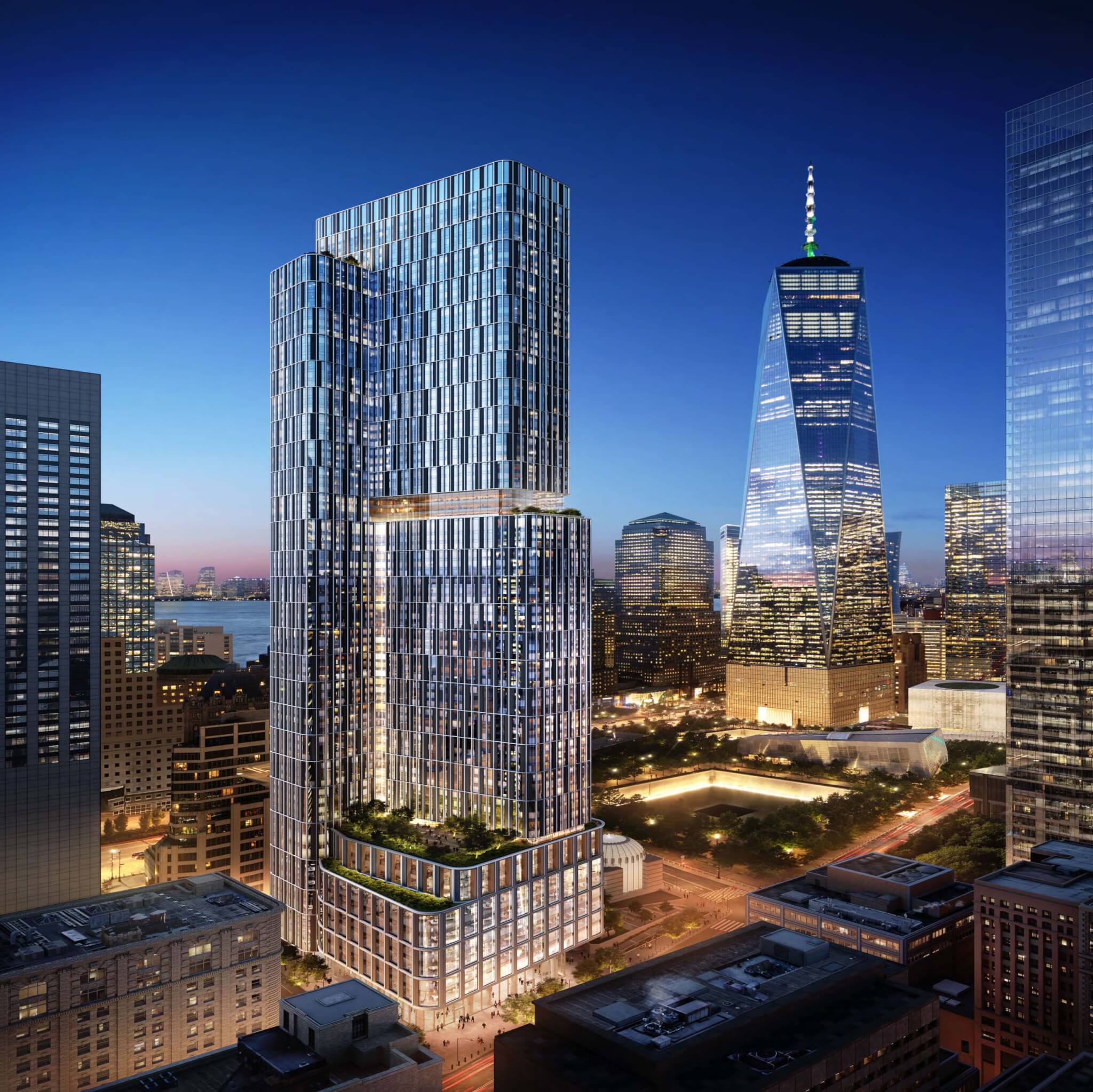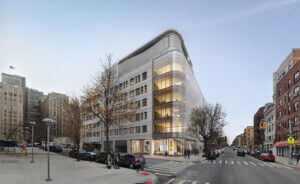5 World Trade Center (5 WTC) was originally home to the Shreve, Lamb, and Harmon–designed Deutsche Bank building, which was demolished in 2011 after debris tore a massive cut into the building on 9/11. Last week, Governor Kathy Hochul announced 1,200 housing units will be coming to 5 WTC, additionally the mixed use project finally received approval from the state’s Public Authorities Control Board, allowing the project to move forward, making it the only residential building in the World Trade Center complex.
Concomitant with a series of land swaps between the Port Authority of New York and New Jersey and the Lower Manhattan Development Corporation (LMDC), initial plans for the site included more commercial and less residential space. As AN reported in 2021, the Kohn Pedersen Fox (KPF)–designed 5 WTC developed by major New York City real estate players Brookfield Properties and Silverstein Properties, was agreed to by the Port Authority and LMDC. At the time, construction was expected to begin in 2023.
The site, which is already fenced-off, is located immediately below Santiago Calatrava’s Greek Orthodox Church, which opened last year. The site has also been a longtime target of affordable housing proponents, including some who fought for a fully affordable building—which, unsurprisingly given New York’s current political landscape, will not happen.
The approved project will see a large, glass-and-metal curtain-walled tower that fits into the Financial District. This is not to say that the design is copying the existing complex; it breaks form with RSHP’s 3 World Trade Center, eschewing the exoskeleton and larger glass spans; it breaks form with Skidmore, Owings, and Merrill’s One World Trade Center and Seven World Trade Center in dividing the tower’s glass spans with metal facade framing pieces. But, the design feels comfortable in a central business district—in no way that makes a statement. The facade is organized around “3-story metal frames and a secondary pattern of solid panels,” according to KPF.
While design schemes floating this design had already been public, the housing news is at the center of current discussions. What stands out about the KPF tower is that it will not host the likes of Condé Nast or international banks, but a few thousands New Yorkers’ homes. 400 units will be permanent low- and middle-income housing, 80 of which will be reserved for “individuals living and working in Lower Manhattan during the 9/11 attacks and the immediate aftermath” according to the Governor’s office. The affordable sections will include units that range from 40 to 120 percent area median income (AMI).

The podium will reserve 10,000 square feet for the nonprofit Educational Alliance and 190,000 square feet for retail and office space, the same level as announced in 2021. Congressman Dan Goldman, who represents the district, said: “I am excited to see that the development at 5 World Trade Center will be moving forward with significantly more affordable housing than initially proposed.”
The state will provide $60 million in funding for the project, and announced a further $5 million contribution from the public benefit corporation Battery Park City Authority’s Joint Purpose Fund. The Governor also said that the Port Authority is requesting a “short-term rent deferral to enable the transaction to proceed.” Governor Hochul said that “we’re about to transform an old parking lot into new homes for thousands of New Yorkers — bringing new affordable housing and community spaces to this iconic neighborhood.”
While the characterization of a site of mass death as a parking lot may seem crass (not to mention that part of the site is a shopping mall), there is a reality to the fact that the site has sat vacant for so long. What is to come is not just a question of the larger World Trade Center complex, but the Financial District itself. Beyond conversations around office-to-residential conversions, some of which are already underway nearby, the question of how the Financial District turns into more of a neighborhood with thousands of additional residents will define the lowest part of Manhattan’s future.











